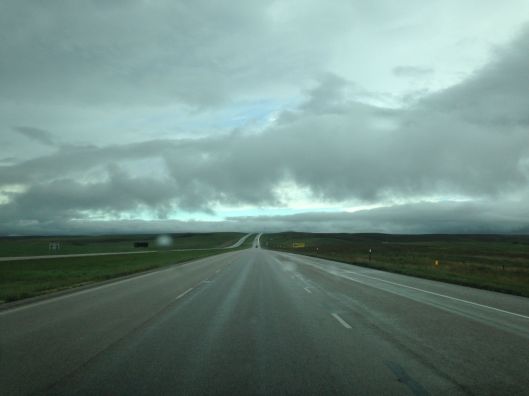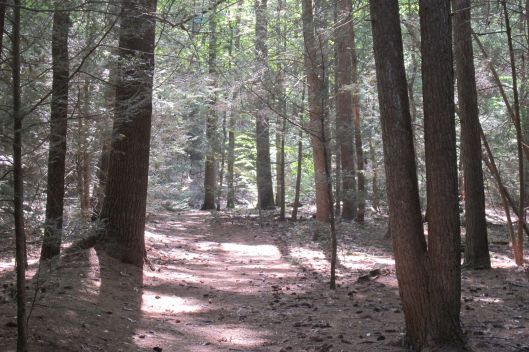
View out the locker room door, Mission Community Pool, San Francisco.
For the past month or so, I’ve been editing and critiquing a book manuscript for a couple of business consultants. The topic is ‘reinvention,’ as in how we can stay ahead of ongoing change in terms of our jobs and careers. There has been a flurry of articles recently about how technology is replacing human labor and about how the list of today’s top jobs will be transformed over the next decade. For a critique of how this impacts actual human beings, read Barbara Ehrenreich’s New York Times book review.
Reinvention as a more personal matter is also in the wind as my friend and fellow blogger, D.A. Wolfe notes in her Huffington Post piece, “The Age of Regret, The Age of Opportunity,” The theme of transforming regret into something positive is also picked up by writer/photographer, Heather Robinson in her post, “Heat Lightning.” After recently celebrating my 60th birthday, regret, opportunity, and subsequent reinvention are on my mind as well.
While I have enjoyed the editing project, it has also left me a bit restless and frustrated with myself. After all this time, I still do not approach my own writing with the kind of purpose and drive that is present when I a) have a job that pays or b) have a publication deadline.
I am easily distracted and undisciplined, and all too ready to push my own creative work aside in favor of fulfilling other pressing and not-so-pressing tasks and commitments.

Hmmm, which comes first washing the dishes or doing some writing?
That’s the regret.
The opportunity and reinvention reside in my ability to change that. I need to commit to my writing with as much vigor as I have given my exercise regime. No one makes me go to the pool, yet for the past six years, even while commuting to a full-time job, I have been swimming at the local pool three times a week. This past winter, no matter how cold or snowy, unless the roads were impassable, or the gym was closed, I was in the pool every Monday, Wednesday and Friday between 1:30 and 2:15 pm without fail. It’s an addiction. I don’t feel right if I don’t go. If I pursued writing with the same discipline, it would become another healthy addiction.
A friend told me the other day, that with a few rare exceptions, she doesn’t follow people she doesn’t know on Instagram. As a busy person who spends plenty of time working in front of a computer screen, she has good reason for this. The Internet can be a huge distraction and time waster.
In her New York Times op-ed, “How to Find Your Place in the World After Graduation,” Pamela Druckerman, advises that the creative process benefits from a little boredom,
You need to be blank, and even a little bit bored, for your brain to feed you ideas. … A lot of life consists in the dead time in between events. Don’t fill these interstitial moments with pornography and cat videos.
She is right about needing blank time as well as the pornography and cat videos — to which I can plead “Not Guilty!” with a clear conscience. Yet I do follow a lot of people I haven’t met on Instagram and in other places — Robinson and Wolfe among them. In fact, if I wasn’t such a busybody and cheerleader of other people’s work and ideas, I’d never have any subjects for my “Talking Art” column.
And, I would have missed out on this video, about Kirra Jamison, a Melbourne artist. It has reminded me of something I’ve known for a good long time and have heard from several other creative people, but have not done for myself.
As the video follows Jamison through her morning routine, which involves rising at six a.m., walking her dog in a nearby park, and then riding her bike to a yoga class — all before heading into her studio, she notes,
I’ve learned not to wait for inspiration, but to create a framework for it.
She says her routine grounds her for the rest of the day and gets her in the zone to start working, concluding that,
Having a routine and showing up day after day without fail is the most important thing.
Naturally this looks very appealing when done by an attractive 30-something who lives in a gorgeous live/work space and has no one else to negotiate her time with beyond her dog. But still, every writer and artist I’ve known or read about has this kind of discipline.
My close friend, Martha Nichols, who tops the masthead at Talking Writing, for example, has been an early riser for years, grabbing that quiet time to read and write before the family descends for breakfast. Another friend, the novelist Jane Ward is also an early riser for the same reason.
In her heart-wrenching 2010 memoir, Let’s Take the Long Way Home, former Boston Globe book critic Gail Caldwell describes her typical work day, which back then included a certain amount of desk time before a long afternoon dog walk with her (now deceased) friend and writer, Caroline Knapp. The book, by the way, is a beautiful testimonial to friendship and to dogs. I highly recommend it to anyone who cares about either.
In her new book, Hold Still, photographer Sally Mann describes a typical day in her studio, which has a specific sequence and involves long hours that often extend into the night.
Robinson, whose blog, Lost in Arles, has hundreds of loyal followers and garners a couple dozen comments for each post, recently told me in a comment that she pushes herself to post every Tuesday and Friday. Even if an idea isn’t readily available, that framework helps her make it happen.
In addition to a set routine, all of these people are self-driven and committed to their “own” work in a way that I am not. Not yet, anyway. The concept of creating a framework for inspiration has captured my attention as something that I really could do. And now that I’ve entered my seventh decade, feels more important than ever.
Without changing my existing routine one iota, the first step is to set a period of time every day —no matter what else is going on — when both my phone and my Web browser are switched off. Step two is making that time my designated “frame” for letting my mind go blank before thinking, reflecting, and writing.
I’ll let you know how it goes.
What about you? How do you get yourself into the right headspace for creative work?












































